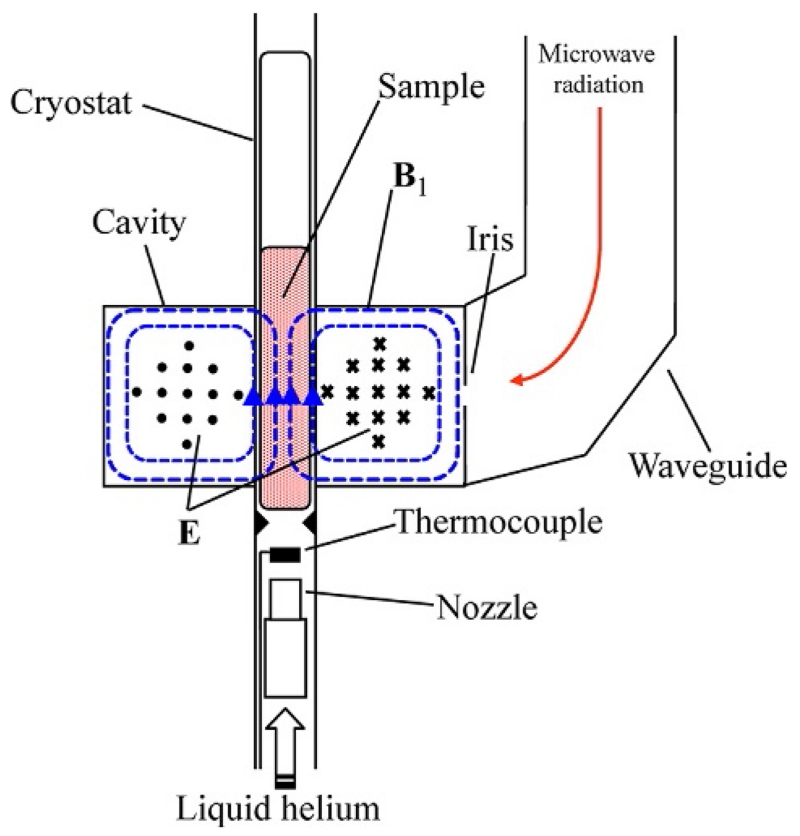Figure 5.
Cross-section of a rectangular TE102 cavity with cryostat and sample. The microwave radiation is transmitted into the cavity through an adjustable circular iris and stored as standing waves. The magnetic field component of the microwave radiation (B1: dotted blue (gray in the print version) lines) is 90° out of phase relative to the electric field component (E: circles and x’s). The arrows show the direction of the B1 vectors inside the cavity. The E vectors are at right angles relative to B1, coming out of the page on the left half of the cavity (circles) and into the page on the right half of the page (x’s). The external magnetic field, provided by an electromagnet, is perpendicular to the plane of the page. The configuration shown allows the detection of species with half-integer spins. In a bimodal cavity, the microwave frequency can be adjusted to generate a different configuration of the standing wave pattern inside the cavity that allows B1 to orient parallel to the external magnetic field for the detection of integer-spin systems.

